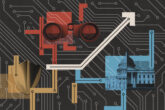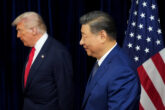March 25, 2020
As the coronavirus spreads, Americans have to flatten the misinformation curve too
Overnight, Americans have become all too familiar with the call to "flatten the curve" by taking precautionary measures to slow the spread of the deadly coronavirus (COVID-19). Fulfilling individual responsibilities in this unprecedented crisis, however, requires more than social distancing and physical isolation.
Digital interactions on social media platforms are increasing, as people's physical interactions are primarily restricted. With so many users seeking and sharing information online, the spread of misinformation about the pandemic can overwhelm social platforms, impede the government's response, and enable bad actors online. Every American must therefore do their part to flatten the misinformation curve.
Anyone can be a carrier of harmful misinformation. Because of this risk, members of the public must devote increased diligence to ensure that the information they share on social media and elsewhere is authentic and contextualized. This responsibility goes beyond merely improved "digital literacy." All Americans must embrace an attitude of "digital citizenship," treating online communications with the same level of scrutiny as in-person interactions.
Read the full article in Business Insider.
More from CNAS
-
Transatlantic Security / Technology & National Security
Look Before We Leap on Artificial IntelligenceThis article was originally published on The Dispatch. A debate about the role that artificial intelligence should and will play in society, and how it will affect humanity fo...
By Jon B. Wolfsthal
-
Technology & National Security
Caleb Withers on the Cybersecurity Frontier in the Age of AICaleb Withers, research associate at the Center for a New American Security, joins Kevin Frazier, the AI Innovation and Law Fellow at the University of Texas School of Law and...
By Caleb Withers
-
Technology & National Security
Prepared, Not ParalyzedExecutive Summary The Trump administration has embraced a pro-innovation approach to artificial intelligence (AI) policy. Its AI Action Plan, released July 2025, underscores t...
By Janet Egan, Spencer Michaels & Caleb Withers
-
Indo-Pacific Security / Technology & National Security
Sharper: Tech + ChinaRecent talks between President Donald Trump and Chinese Communist Party General Secretary Xi Jinping placed a spotlight on emerging technologies, from high-end chips to minera...
By Charles Horn & Sevi Silvia




